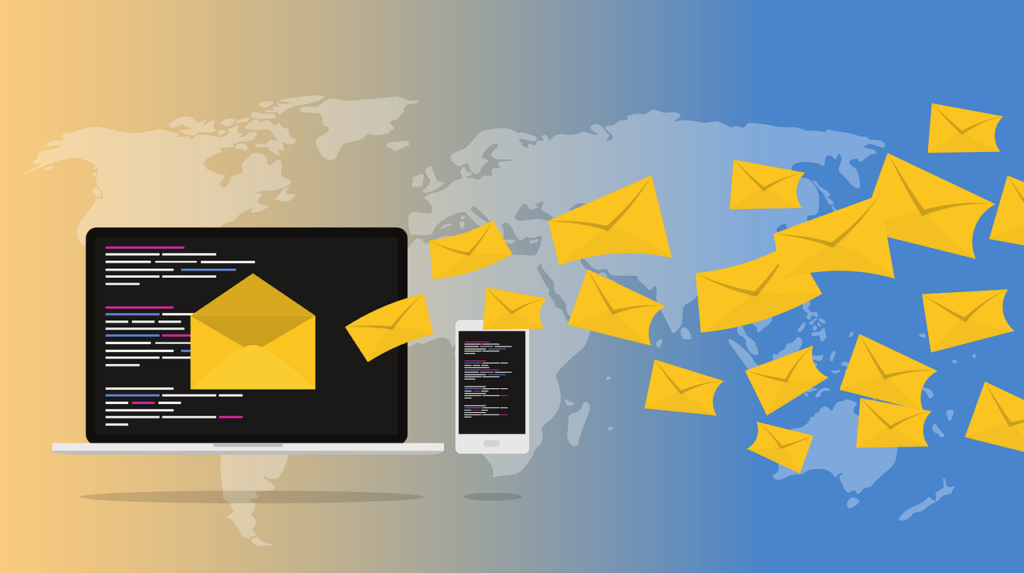In today’s digital age, capturing and retaining your audience’s attention has become more challenging than ever. Understanding and utilizing behavioral triggers in your email marketing campaigns can make all the difference. From personalization to timing, we’ll explore how to grab your audience’s attention and drive engagement through strategic email communication. Whether you’re a seasoned marketer or just starting out, this blog will provide valuable insights to help you elevate your email marketing game.
Understanding Your Audience
Mastering Behavioral Triggers in Email Marketing: Grab Your Audience’s Attention Now!Segmenting your audience based on demographics, behavior, and preferences allows you to tailor your email content for maximum relevance. Utilize surveys, feedback forms, and analytics to gain insights into your audience’s interests and needs. Understanding the pain points and challenges of your audience helps you craft compelling email content that resonates with them. Personalizing emails based on the audience’s past interactions can significantly improve engagement and conversion rates. By implementing these strategies, you can effectively grab your audience’s attention and create impactful email marketing campaigns.
Segmenting Your Audience
To effectively capture your audience’s attention, it’s crucial to divide them into distinct groups based on demographics, behavior, and preferences. Consider segmenting your audience based on factors such as age, location, purchase history, and engagement with previous emails. This segmentation enables you to send highly relevant emails that are tailored to meet the specific interests and needs of different audience segments. By carefully analyzing data such as open rates and click-through rates for each segment, you can refine your email marketing strategy for better results and improved engagement.
Analyzing Customer Behavior
Tracking how recipients interact with your emails provides invaluable insights into their preferences and interests. Analyzing which types of content resonate most with your audience allows you to tailor future emails accordingly. Understanding customer behavior patterns empowers you to anticipate their needs and deliver timely, personalized email communications. By leveraging A/B testing to experiment with different approaches and continually refine your email campaigns based on customer behavior analysis, you can effectively grab your audience’s attention and create impactful email marketing campaigns.
Crafting Compelling Subject Lines
To effectively grab your audience’s attention, personalized subject lines can make a significant impact. By addressing your audience by name and tailoring the subject line to their interests and preferences, you create a sense of individual connection. Additionally, incorporating a sense of urgency in your subject lines prompts immediate action from recipients, encouraging them to engage with your email content promptly. Creating fear of missing out (FOMO) by highlighting limited-time offers or exclusive deals can further entice your audience to open the email. Experimenting with emojis or symbols to add visual appeal and convey emotions in your subject lines can also make your emails stand out in crowded inboxes, increasing the likelihood of engagement.
Personalization for Engagement
Segmenting your email list based on customer behavior is a powerful way to personalize content and boost engagement. By including dynamic content that adapts to each recipient’s preferences, past interactions, and purchase history, you can deliver highly relevant emails that resonate with your audience. Addressing pain points or desires directly in the subject line can make recipients feel understood and valued, prompting them to engage with your emails. Additionally, utilizing location-based personalization enhances relevance and helps you connect with recipients on a local level, further strengthening the impact of your email marketing efforts.
Urgency and FOMO Tactics
Employing countdowns or ticking clocks in your subject line effectively creates a sense of urgency, prompting immediate engagement from recipients. Highlighting scarcity by showcasing limited stock or availability of products or services in the subject line can significantly entice your audience to take action. Using persuasive language that emphasizes the consequences of missing out triggers a fear of being left behind, compelling recipients to open your emails promptly. Additionally, implementing exclusive offers or early access opportunities instills a fear of missing out among recipients, further boosting engagement with your email content.
Creating Tailored Content
Understanding your audience’s preferences and behaviors is the foundation for crafting personalized content that truly resonates with them. By utilizing customer data and insights, you can tailor your content according to specific demographics, interests, and purchase history, ensuring that your messaging is highly relevant and impactful. This personalized approach speaks directly to the recipient’s needs and motivations, fostering a genuine sense of connection. Additionally, testing different content variations allows you to identify the most effective approach for engaging different segments of your audience, ultimately enhancing the overall effectiveness of your email marketing campaigns.
Dynamic Content Creation
Incorporating dynamic content tools in your email marketing strategy allows you to deliver personalized content in real time, tailoring the message based on each recipient’s unique interactions and behavior. By implementing algorithms that automatically adjust the email content to cater to individual preferences and browsing history, you can enhance relevance and engagement. Utilizing dynamic product recommendations further amplifies the impact by showcasing items related to the recipient’s past purchases or browsing activity, creating a compelling experience. Creating a sense of urgency by incorporating countdown timers or limited-time offers based on user behavior adds an element of exclusivity and prompts immediate action, effectively capturing your audience’s attention and driving engagement.
Trigger-Based Email Automation
Mastering behavioral triggers in email marketing involves setting up trigger-based emails that respond to specific user actions, such as signing up, making a purchase, or abandoning a cart. By personalizing these trigger-based emails with dynamic content tailored to the recipient’s behavior or stage in the buyer’s journey, you can significantly enhance their impact. Additionally, utilizing behavioral triggers, such as click-through rates or email open times, allows you to send follow-up messages with targeted content based on user engagement levels, maximizing relevance. Furthermore, automating re-engagement emails triggered by inactivity or dormant accounts presents an opportunity to provide incentives and personalized recommendations, effectively reigniting interest and fostering continued engagement.
Optimizing Call-to-Actions
Mastering behavioral triggers in email marketing involves crafting clear and compelling call-to-action (CTA) buttons that resonate with your audience’s needs and desires. By using action-oriented language, you can prompt immediate responses from your email recipients, increasing engagement and driving conversions. Incorporating urgency and scarcity elements into your CTAs creates a sense of FOMO (fear of missing out), compelling recipients to take action. Experimenting with different button colors, sizes, and placement is essential to optimize the visibility and click-through rates of your CTAs, ensuring maximum impact and effectiveness in your email marketing efforts.
Clear and Persuasive CTAs
Crafting compelling call-to-action (CTA) buttons involves clearly communicating the value proposition and benefit of taking action to your audience. Utilize persuasive language that sparks excitement or curiosity, prompting immediate engagement from your recipients. Additionally, leverage social proof or endorsements to establish credibility and trust around your CTAs, creating a compelling incentive for your audience to act. It’s important to consistently analyze metrics and user feedback to refine and improve the effectiveness of your CTAs, ensuring that they resonate with your audience and drive the desired actions.
A/B Testing for Effectiveness
To optimize the effectiveness of your call-to-action (CTA) buttons, conducting A/B tests on various design and messaging variations is crucial. By gathering quantitative data on click-through rates, conversion rates, and engagement levels, you can make informed decisions about the most impactful CTAs for your audience. Testing elements such as wording, color schemes, button shapes, and positioning within your email content allows you to identify the most compelling and effective approaches. Utilizing A/B testing tools or platforms that offer statistical significance empowers you to confidently determine the winning CTA variants, ensuring maximum impact and engagement with your email marketing efforts.
Leveraging Behavioral Data
Understanding your audience’s online behavior is essential for tailoring email content and timing effectively. By identifying patterns in user interactions, you can create personalized and targeted email campaigns that resonate with your recipients. Utilizing behavioral triggers such as cart abandonment or browsing history allows you to send relevant emails at the right time, maximizing engagement. Additionally, analyzing customer engagement metrics enables you to refine email content based on their preferences and actions, ensuring that your emails are impactful and valuable to your audience.
Utilizing Customer Insights
Segmenting your email list based on customer behavior is essential for sending tailored content that resonates with different groups. By leveraging past purchase behavior, you can recommend products or services that align with each customer’s interests, increasing the likelihood of engagement and conversions. Personalizing email subject lines and content based on specific customer interactions with your brand or website adds a personalized touch, making your emails more relevant and compelling. Additionally, utilizing A/B testing allows you to understand how different customer segments respond to various email triggers and content, enabling you to optimize your email marketing strategies effectively.
Improving Email Campaign Performance
Mastering behavioral triggers in email marketing involves optimizing the timing of your emails based on recipient behavior, such as open rates and click-through rates. By leveraging dynamic content, you can showcase products or services based on individual customer preferences and interactions, maximizing relevance and increasing engagement. Crafting compelling calls-to-action that align with the behavioral triggers of your target audience is essential for driving higher engagement and conversions. Furthermore, continuously tracking and analyzing performance data allows you to make informed adjustments that resonate with your audience’s behaviors, ensuring that your email marketing efforts remain impactful and relevant.
Conclusion
In conclusion, mastering behavioral triggers in email marketing is an essential aspect of engaging and resonating with your audience. Understanding your audience, segmenting them based on their behavior, and crafting compelling subject lines are crucial steps in creating tailored and effective email campaigns. Personalization, urgency tactics, and leveraging behavioral data further enhance the impact of your email marketing efforts. Optimizing call-to-actions through A/B testing and leveraging customer insights ensures that your messages are not only seen but prompt action from your recipients. By continuously improving and refining your email campaigns based on behavioral data, you can ensure that your marketing efforts remain relevant, impactful, and drive meaningful engagement with your audience.


